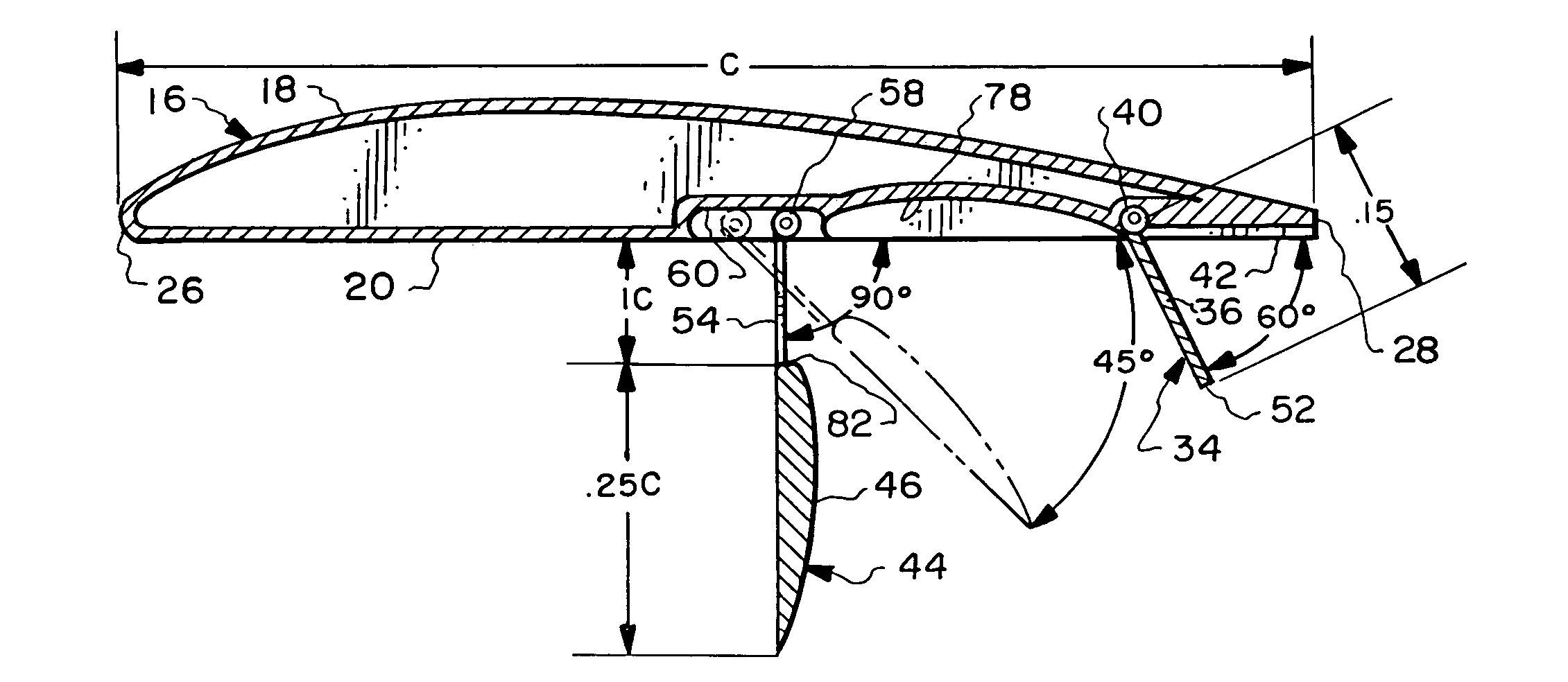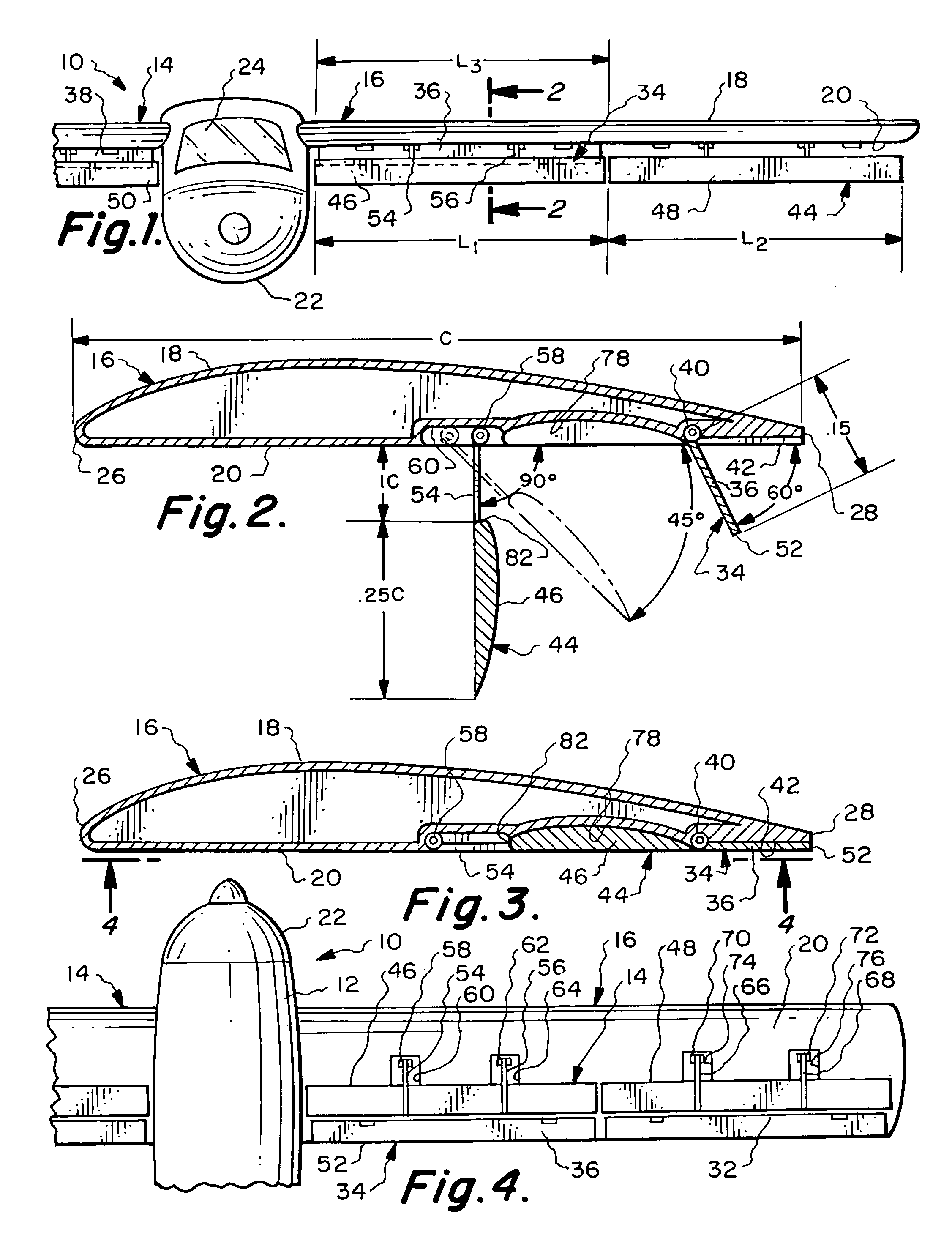Auxiliary wing and flap assembly for an aircraft
a technology of auxiliary wings and flaps, applied in the field of aircraft, can solve the problems of inability to obtain quickly adequate landing space, difficulty and many times almost impossible, and the aircraft may be coming down at too steep of an angle to perform any kind of landing, so as to shorten the landing distance and increase the lift
- Summary
- Abstract
- Description
- Claims
- Application Information
AI Technical Summary
Benefits of technology
Problems solved by technology
Method used
Image
Examples
Embodiment Construction
[0021]Referring particularly to the drawing, there is shown an aircraft 10 that has a fuselage 12, a right wing 14 and a left wing 16. The structure of the present invention is going to be discussed in relation to the left wing 16. However, it is considered to be within the scope of this invention that the same structure will be employed in conjunction with the right wing 14. Mounted on the lower end of the fuselage is a conventional landing gear of some sort, which is not shown.
[0022]The wing 16 is airfoil-shaped and has a top surface 18 and a bottom surface 20. The front of the fuselage 12 is formed into a nose 22 and above the nose 22 is located a windshield 24. The aircraft wing 16 has a leading edge 26 and a trailing edge 28. It is to be understood that when the aircraft 10 is flown that the leading edge 26 is first to move through the air. The aircraft wing 16 has a chord length which is shown as C in FIG. 2. The aircraft wing 16 has a chord axis which extends between the tip ...
PUM
 Login to View More
Login to View More Abstract
Description
Claims
Application Information
 Login to View More
Login to View More - R&D
- Intellectual Property
- Life Sciences
- Materials
- Tech Scout
- Unparalleled Data Quality
- Higher Quality Content
- 60% Fewer Hallucinations
Browse by: Latest US Patents, China's latest patents, Technical Efficacy Thesaurus, Application Domain, Technology Topic, Popular Technical Reports.
© 2025 PatSnap. All rights reserved.Legal|Privacy policy|Modern Slavery Act Transparency Statement|Sitemap|About US| Contact US: help@patsnap.com


